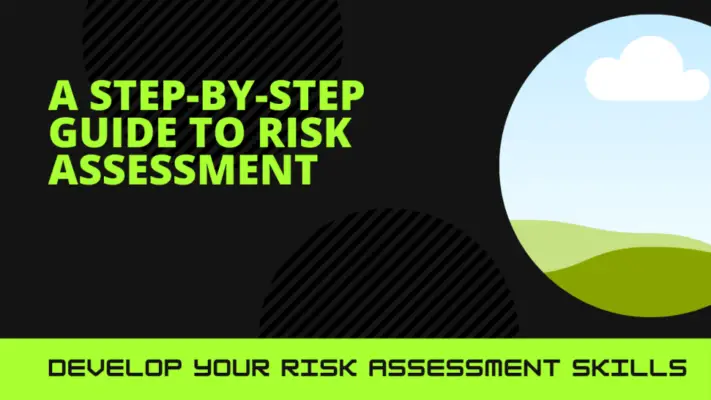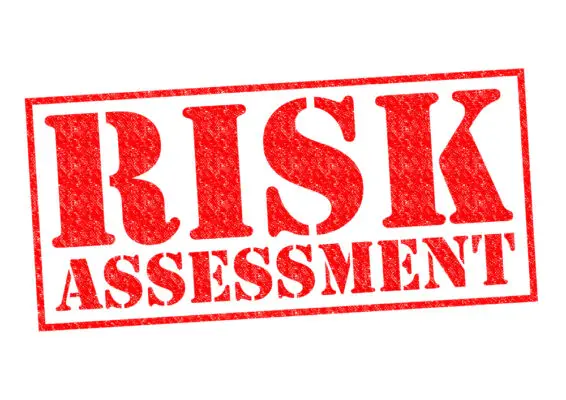OT Risk Assessment is an essential process for organizations that operate in the field of Operational Technology (OT). With the increasing reliance on interconnected systems and smart devices, identifying and mitigating potential risks has become paramount.
This article explores the importance of an OT-tailored risk assessment, its key components, deliverables, and challenges.
An OT risk assessment involves a systematic evaluation of vulnerabilities, threats, and consequences associated with OT systems. It encompasses analyzing physical security, network infrastructure, software vulnerabilities, and human factors.
The goal is to identify potential risks that can compromise critical assets’ availability, integrity, and confidentiality.
The key steps in conducting an OT risk assessment include scoping the assessment, gathering data through interviews and document reviews, and assessing vulnerabilities and threats using established frameworks or methodologies such as NIST SP 800-82 or IEC 62443 series standards.
Despite its significance, conducting an OT risk assessment poses several challenges, including a lack of standardized approaches specific to OT environments and a limited understanding of cyber-physical risks.
To overcome these challenges, organizations should adhere to best practices involving cross-functional teams with expertise in IT and OT domains. This ensures a comprehensive understanding of risks across all layers of the system architecture.

Why is an OT-tailored risk assessment necessary?
An OT-tailored risk assessment is necessary in order to accurately evaluate the potential risks associated with occupational therapy interventions and ensure the safety of both patients and practitioners.
Occupational therapists (OTs) work in various environments, including healthcare facilities, schools, and community settings, engaging in activities to improve individuals’ physical, cognitive, and emotional well-being.
However, these interventions may involve the use of industrial control systems and industrial automation, which can introduce potential vulnerabilities to cyber threats.
Therefore, conducting a comprehensive risk assessment specific to OT environments is crucial for identifying critical risks and implementing appropriate Cyber Risk management strategies.
This tailored approach allows for a thorough evaluation of OTs’ unique risks and enables the development of targeted mitigation measures to protect against potential harm.
What does an OT risk assessment involve?
Conducting a comprehensive evaluation of potential hazards and vulnerabilities is essential in ensuring operational technology systems’ safety and security. An OT risk assessment involves several key components that contribute to this evaluation:
- Asset inventory: This entails identifying all assets within the operational environment, including hardware, software, and data critical to system functionality.
- Risk assessment process: A structured methodology is used to identify potential threats, assess their likelihood and impact, and prioritize them based on their level of risk.
- Cyber risk assessments: These assessments focus specifically on cyber threats and vulnerabilities within the industrial network, aiming to detect any weaknesses that malicious actors could exploit.
- Security risk management includes implementing security controls and measures to mitigate identified risks and align with industry best practices or security standards.
Conducting an OT risk assessment, organizations can effectively identify typical vulnerabilities in their systems, evaluate the potential consequences of exploiting them, and implement appropriate safeguards to protect against these risks.
Deliverables from an OT Risk Assessment
OT Cyber Security is the practice of protecting operational technology systems from cyber threats and attacks. It involves implementing security measures to safeguard critical infrastructure and industrial control systems.
OT Risk Management refers to the process of identifying, assessing, and mitigating risks associated with operational technology systems. OT Risk Assessment is a crucial component of OT Risk Management, which involves evaluating potential vulnerabilities and threats to identify areas of weakness in the system.
IT and OT Security differ in their focus areas and objectives. IT Security protects information technology systems such as computers, networks, and data centers from unauthorized access or disruption.
On the other hand, OT Security focuses on safeguarding industrial control systems that manage physical processes and operations in sectors like manufacturing, energy, transportation, etc.
OT Cyber Security matters because any compromise or disruption in critical infrastructure can severely affect public safety, economic stability, and national security.
As operational technology becomes increasingly interconnected with IT networks through digital transformation initiatives like Industry 4.0 or the Industrial Internet of Things (IIoT), the potential attack surface for cyber threats expands significantly.
Therefore, ensuring robust OT Cyber Security practices is essential to protect against emerging cyber risks impacting vital services and industries.
What is OT Cyber Security?
Cybersecurity in the realm of operational technology involves implementing protective measures to safeguard critical infrastructure against cyber threats. The following are key aspects of OT cybersecurity:
- Operational Technology refers to using computers and software to monitor and control physical processes, such as manufacturing or energy production.
- Cyber Risk: The potential for harm resulting from unauthorized access or manipulation of industrial processes through cyber means.
- Security Assessments: Conducting security risk assessments is crucial in identifying vulnerabilities and determining appropriate security controls for OT systems.
Effective risk management requires a comprehensive risk assessment methodology that follows industry standards. A thorough risk assessment report provides insights into system weaknesses and risk mitigation recommendations.
Implementing robust security controls, organizations can enhance their defence against cyber threats in the operational technology environment.

What is OT Risk Management?
Effective risk management in the realm of operational technology involves a comprehensive analysis of potential vulnerabilities and the implementation of appropriate security controls to safeguard critical infrastructure against cyber threats.
Risk evaluation and management strategies are crucial in identifying and mitigating potential risks. This process includes conducting technical risk assessments using automated risk assessment tools, which help identify vulnerabilities and assess their impact on critical assets.
Additionally, understanding the threat landscape is essential for effective risk management. Adversary threat intelligence provides valuable insights into potential cyber threats targeting operational technology systems.
| Benefits of OT Risk Management | Risks without OT Risk Management |
|---|---|
| Enhanced security | Increased vulnerability |
| Protection of critical assets | Potential system disruptions |
| Compliance with regulations | Loss or compromise of data |
| Reduced financial loss | Damage to reputation |
| Improved operational efficiency | Legal and regulatory penalties |
Implementing a robust risk mitigation strategy is crucial for safeguarding operational technology systems from cyber threats, ensuring critical infrastructure protection and minimizing potential damages caused by unauthorized access or attacks.
What is OT Risk Assessment?
OT Risk Assessment is a structured approach used to identify, evaluate, and prioritize potential risks that may impact the security and reliability of operational technology (OT) systems.
It involves analyzing various operational issues within industrial systems, such as process control networks and supervisory control and data acquisition (SCADA) systems.
OT risk assessment follows industry standards, including those set by organizations like the International Society of Automation (ISA) and the International Electrotechnical Commission (IEC).
This assessment considers technical vulnerabilities and incorporates supply chain concerns and potential threats from malicious actors.
Conducting an automated, data-driven risk assessment is a key step in ensuring the resilience and security of OT systems.
Organizations can effectively manage risks associated with their industrial operations by identifying vulnerabilities and prioritizing mitigation efforts based on objective analysis.
What are the Differences Between IT and OT Security?
The distinct characteristics of IT and OT security lie in their respective focuses on information technology systems and operational technology systems, which evoke a sense of urgency to ensure the protection and reliability of critical infrastructures.
While IT security primarily deals with data confidentiality, integrity, and availability within computer networks, OT security focuses on the protection and reliability of physical systems that control industrial processes.
This distinction is crucial because OT risk assessment involves assessing cybersecurity risk exposure for loss of availability rather than just data breaches. It requires specific indicators for risk, such as safety risks or production downtime risks.
Moreover, unlike ad-hoc or annual risk reviews commonly used in IT security, OT risk assessment demands continuous analysis to identify vulnerabilities accurately.
Accurate asset inventory and advanced asset management are also essential components in achieving tangible risk reduction in the operational technology environment.
Why does OT Cyber Security, Matter?
Securing operational technology systems is crucial for safeguarding critical infrastructures and ensuring the uninterrupted functioning of industrial processes. High-level risk assessment is vital in identifying and mitigating potential threats to OT systems.
Organizations can develop effective security measures by analyzing various aspects of risk, such as advanced OT asset inventory, threat mapping, and analysis of threats.
Understanding attack vectors, attack scenarios, and attack tactics allows for developing an attack simulation algorithm that can predict vulnerabilities in the system. This analytical approach helps organizations prioritize their cybersecurity efforts and allocate resources efficiently.
Incorporating an objective perspective into OT cyber security ensures that decision-making is based on data-driven insights rather than subjective opinions.
| Aspects of Risk | Potential Threats |
|---|---|
| Advanced OT Asset Inventory | Attack Vectors |
| Threat Mapping | Attack Scenarios |
| Analysis of Threats | Attack Tactics |
What are the Three (3) Main OT Cyber Security Attack Vectors?
Attack vectors in OT cyber security can be categorized into three main types:
- Network-based attacks target the communication infrastructure of the OT system, aiming to exploit vulnerabilities in protocols or devices.
- Physical attacks involve direct manipulation or destruction of hardware components, such as tampering with sensors or cutting wires.
- Social engineering attacks exploit human vulnerabilities to gain unauthorized access to the OT system, often through techniques like phishing or impersonation.
Organizations need advanced asset visibility and asset management applications to effectively address these attack vectors to identify potential vulnerabilities and prioritize mitigation efforts.
Additionally, threat actors should consider realistic attack paths and breach attack simulations to understand their software attack surface better.
Control levels and access control mitigation strategies must also be implemented to enhance network security score and protect against potential attack supply chain security breaches.
Why do Organisations Need OT Cyber Security Assessment in the First Place?
Organizations benefit from conducting thorough assessments of their OT cyber security to understand potential vulnerabilities and risks within their operational systems comprehensively.
These assessments help identify the asset level at which audits of assets are required, enabling organizations to prioritize their cybersecurity efforts effectively. By conducting an analysis of threat sources, organizations can assess the actual threats they face and implement appropriate measures to mitigate them.
Moreover, contextual analysis allows organizations to understand the specific cybersecurity vulnerabilities that may exist within their operational technology (OT) environment.
This knowledge empowers organizations to make informed decisions regarding additional controls and countermeasures for better protection against cyberattacks. Furthermore, automated threat detection mechanisms aid in real-time monitoring and response.
These assessments provide a foundation for continuous improvement by facilitating benefit analyses and ensuring compliance with standards such as the CIS Critical Security Controls.
| Asset Level | Audits of Assets | Actual Threats |
|---|---|---|
| Analysis | Implementation | Monitoring |
| Prioritization | Evaluation | Mitigation |
| Compliance | Improvement | Protection |
What are the key steps involved in conducting an OT risk assessment?
Conducting an OT risk assessment involves a series of key steps that systematically analyze and evaluate potential vulnerabilities and threats specific to operational technology systems.
To ensure a comprehensive assessment, organizations should consider the following steps:
- Chain Attack Supply Chain Analysis: Assess the overall security of the supply chain involved in operational technology systems to identify any potential weak links or vulnerabilities.
- Access Control and Network Security Issues Evaluation: Analyze access control mechanisms and network security protocols to identify any gaps or weaknesses that malicious actors could exploit.
- Automated and Behavioral Analysis: Utilize automated tools and behavioral analysis techniques to identify abnormal patterns or activities within operational networks, ensuring early detection of potential threats.
Conducting these steps, organizations can gain valuable insights into device vulnerabilities, operational processes, and the availability of critical processes.
This enables them to implement necessary safeguards and mitigate risks effectively in their operational technology systems.
What are some common challenges associated with conducting an OT risk assessment?
One common challenge in evaluating operational technology systems for potential vulnerabilities and threats is the complex nature of analyzing access control mechanisms and network security protocols involved.
Operational technology (OT) systems, such as building automation systems and closed-loop operations, rely heavily on digital technologies to automate various business processes.
Conducting an OT risk assessment requires organizations to assess network sensors’ effectiveness, compliance with audits, and the security of automation systems.
However, organizations often face challenges due to limited resources and expertise in conducting comprehensive assessments.
Additionally, the dynamic nature of OT environments poses a challenge for organizations as new vulnerabilities emerge regularly.
Overcoming these challenges requires a systematic approach incorporating proper training, collaboration between IT and OT teams, and regular reassessment to ensure ongoing protection against potential risks.
What are some best practices for conducting an OT risk assessment?
Implementing a systematic approach that incorporates collaboration between IT and OT teams, regular reassessment, and proper training is crucial for ensuring the effectiveness of an operational technology risk evaluation.
To conduct an effective OT risk assessment, industrial organizations should follow a step-by-step approach considering the specific environment.
Some best practices include:
- Conducting a comprehensive inventory of assets and understanding their interdependencies.
- Identifying potential threats and vulnerabilities to business operations.
- Evaluating risks based on likelihood and impact using applicable consequence categories.
- Prioritizing risks based on a risk-based approach.
- Developing actionable guidance for mitigating identified risks.
- Regularly reassessing risks to adapt to changing circumstances.
- Providing practical recommendations for improvement in line with industry standards.
- Ensuring compliance with regulatory requirements such as box compliance assessments.
Adhering to these best practices, organizations can enhance their ability to identify and address potential OT risks effectively.
Frequently Asked Questions
How long does it typically take to conduct an OT risk assessment?
The typical duration for conducting an OT risk assessment varies depending on factors such as the size and complexity of the organization’s operational technology infrastructure. Still, it generally ranges from a few weeks to several months.
What are the qualifications or expertise required to conduct an OT risk assessment?
Qualifications or expertise required to conduct an OT risk assessment include a deep understanding of operational technology systems, knowledge of cybersecurity principles and practices, experience conducting risk assessments, and proficiency in relevant technical tools and methodologies.
Does an OT risk assessment consider both internal and external threats?
Yes, an OT risk assessment considers both internal and external threats. It evaluates potential risks to the operational technology system from within the organization (internal) and outside sources (external).
Is it necessary to update the OT risk assessment periodically? If so, how often?
It is necessary to periodically update the OT risk assessment in order to ensure its accuracy and relevance. The frequency of updates may vary depending on technological changes, threats, regulations, or organizational processes.
What are the potential consequences of not conducting an OT risk assessment?
Not conducting an OT risk assessment can lead to potential consequences such as unidentified vulnerabilities, increased likelihood of cyberattacks, compromised data integrity and confidentiality, regulatory non-compliance, financial losses, reputational damage, and legal liabilities.

Conclusion
Conducting an OT risk assessment is crucial for ensuring the security of operational technology systems.
It involves a thorough evaluation of potential threats and vulnerabilities, followed by the identification of appropriate countermeasures.
The deliverables from this assessment include an understanding of the specific risks OT systems face and recommendations for mitigating those risks.
However, there are challenges associated with conducting an OT risk assessment, such as limited visibility into legacy systems and difficulty quantifying risks.
Following best practices, organizations can effectively assess and manage risks in their OT environments.

Chris Ekai is a Risk Management expert with over 10 years of experience in the field. He has a Master’s(MSc) degree in Risk Management from University of Portsmouth and is a CPA and Finance professional. He currently works as a Content Manager at Risk Publishing, writing about Enterprise Risk Management, Business Continuity Management and Project Management.

